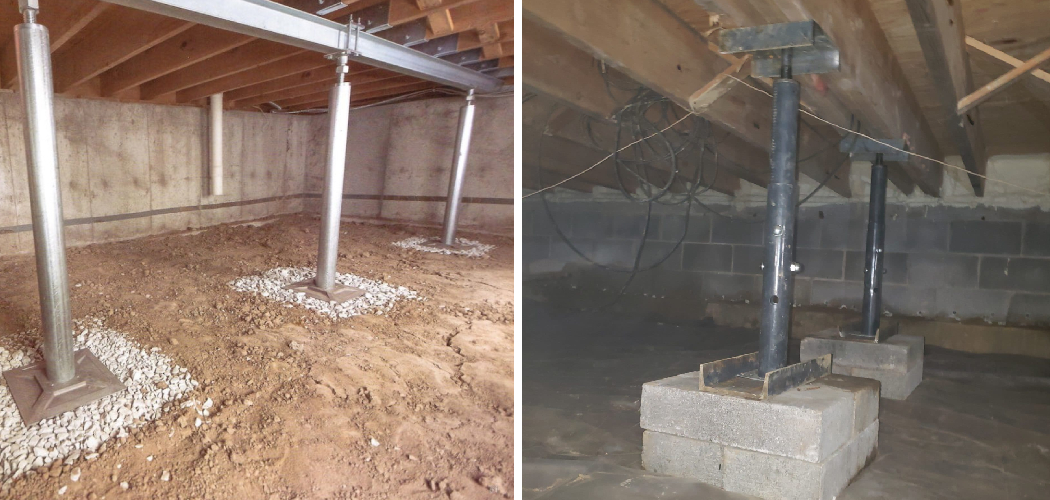Is your home’s crawl space starting to sag? Are you concerned about the structural integrity of the floor in this area? Don’t fret! Learning how to fix sagging floor in crawl space doesn’t have to be as complicated or daunting as it might seem. Read on for some practical tips that can help you repair, and even reinforce, your floor joists in no time at all.
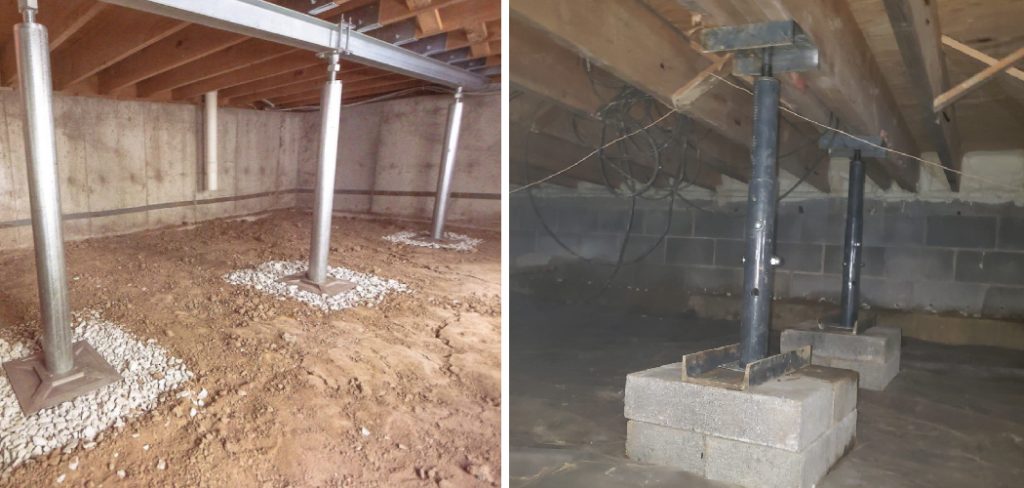
Luckily, by following a few simple steps, most homeowners can successfully fix sagging floors in their homes. In this blog post, we’ll walk you through the process of how to identify and address those sagging spots. We’ll provide an overview of the typical causes for these issues and explain what specific steps you need to take to repair them yourself so that you can bring back some structural integrity and safety into your home. Let’s get started!
What Causes Sagging Floor in Crawl Space?
1. Poorly Installed Joists
When joists are installed incorrectly, they may not provide enough support for the floor. This can cause sagging in localized areas or across the entire floor, depending on how extensive the issue is. Also, if joists are not properly spaced or their size is inadequate for the length of the span, the floor will sag in the middle.
2. Poorly Installed Flooring Materials
Another common problem that can cause sagging floors in crawl spaces is poorly installed flooring materials such as hardwood, laminate, carpet, vinyl plank, and tile. If these materials are not installed properly, they can cause the floor to bow or sag in various areas.
3. Foundation Settlement
Foundation settlement can also be a contributing factor to sagging floors in crawl spaces. If the foundation has settled unevenly, it can cause the joists or flooring material above to sink and create a bowed or sagging floor.
4. Moisture
High levels of moisture in the crawl space can also lead to sagging floors. When wood absorbs too much moisture, it becomes weak and can no longer support the weight of the floor above it. This is why proper moisture control is so important when dealing with sagging floors in crawl spaces.
5. Poorly Built Subfloor
Finally, a poorly built subfloor can be the culprit behind sagging floors in crawl spaces. If the subfloor is too thin or is made of low-grade material, it may not be able to withstand the weight of whatever flooring material has been installed on top of it.
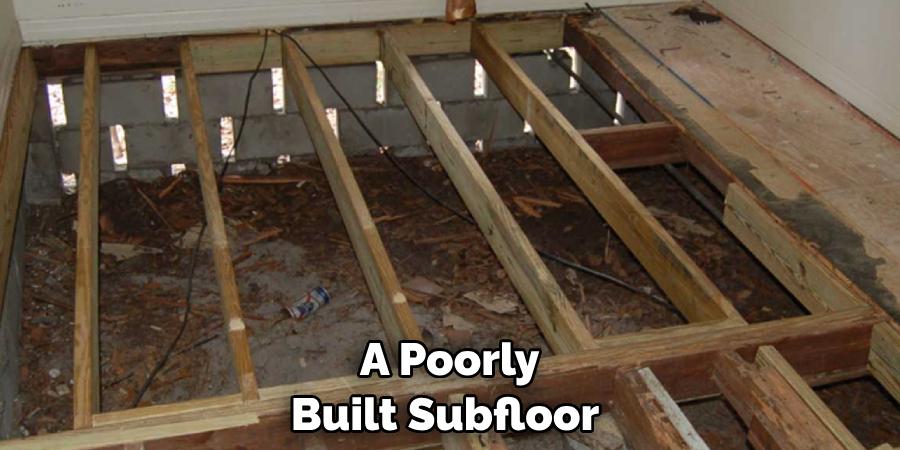
12 Tips on How to Fix Sagging Floor in Crawl Space
1. Inspect All Joists and Beams in Your Crawl Space for Sagging
This is very important before you can begin to fix the problem. Take a look at all of the joists and beams in your crawl space for any signs of sagging, warping or other damage that could be causing the floor to sag. Also check for any rotting or other damage, as this could be an indication of a bigger problem.
2. Strengthen All Joists and Beams That Need It
If you notice that any joists or beams are sagging, then it is important to strengthen them by adding additional support braces or using steel I-beams. This will help to keep the floor from sagging further.
3. Level Out Any Uneven Joists or Beams
If you have any joists or beams that are uneven, then it is important to level them out with shims so that they are even. This will help to ensure that the floor has a more even support structure and will not sag as much in certain areas.
4. Replace Damaged Joists or Beams
If any of your joists or beams are damaged beyond repair, then you should replace them altogether. This is especially important if you notice any rotting or other signs of decay on the wood.
5. Add Additional Support Posts
If your crawl space has more open areas that need additional support, it may be helpful to add additional support posts. This can help to further reinforce the floor and keep it from sagging in certain areas.
6. Check for Proper Ventilation
It is also important to check your crawl space for proper ventilation. Proper ventilation helps to ensure that there is adequate air circulation, which can help reduce moisture buildup and prevent mold growth, which can cause wood rot and further damage to your floor.
7. Add Plywood or OSB Sheathing
If you notice that the joists and beams are sagging, then it may be beneficial to add a layer of plywood or OSB sheathing over the top of them. This can help to provide additional support and prevent further sagging of the floor.
8. Insulate the Crawl Space
Insulating your crawl space can help to reduce moisture buildup, which can further help with sagging floors. Make sure that all of the insulation is properly installed and that it covers the entire area.
9. Install a Vapor Barrier
Another way to reduce moisture buildup in your crawl space is by installing a vapor barrier. This will help to keep any moisture from getting into the crawl space and causing further damage to your floor.
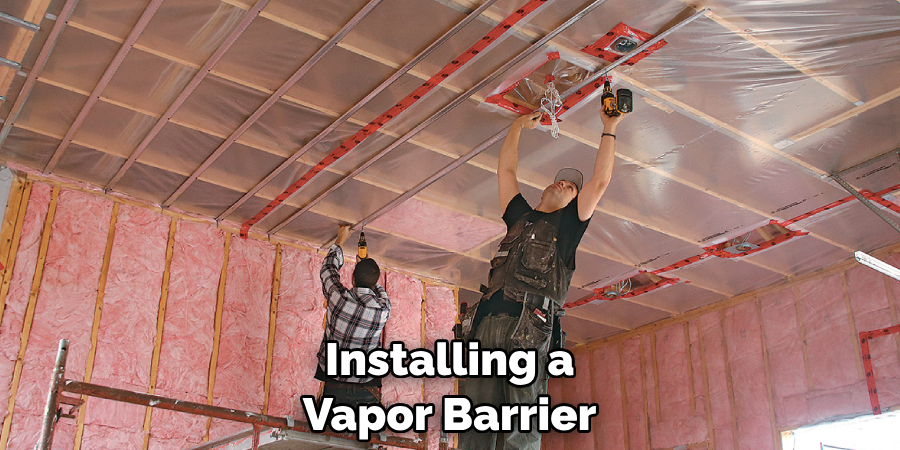
10. Use Steel Support Beams
If you have a large area of sagging in your floor, then it may be beneficial to use steel support beams to redistribute the weight on the floor more evenly. This will help to keep the floor from sagging further in certain areas.
11. Add Bracing and Anchoring
If you notice any instability in your floor, then it may be helpful to add bracing and anchoring to further support the floor. This can help keep the joists and beams from warping or sagging further.
12. Repair Any Damage That Has Been Done
Make sure that any damage caused by the sagging is properly repaired. This may include replacing joists or beams and patching any holes in the floor. These repairs can help to ensure that your floor is stable and will not sag further in the future.
By following these tips, you should be able to effectively fix your sagging floor in your crawl space. Make sure to take the time to properly inspect all of the joists and beams in the area and address any issues that you find. Taking these steps can help ensure that your floor remains strong and stable for many years to come.
Frequently Asked Questions
What Precautions Should I Take While Fixing a Sagging Floor in a Crawl Space?
When fixing a sagging floor in your crawl space, it is important to take proper safety precautions. Wear gloves and protective eyewear as you may come into contact with dust and debris while working. Make sure the area is well-ventilated by opening windows or using fans.
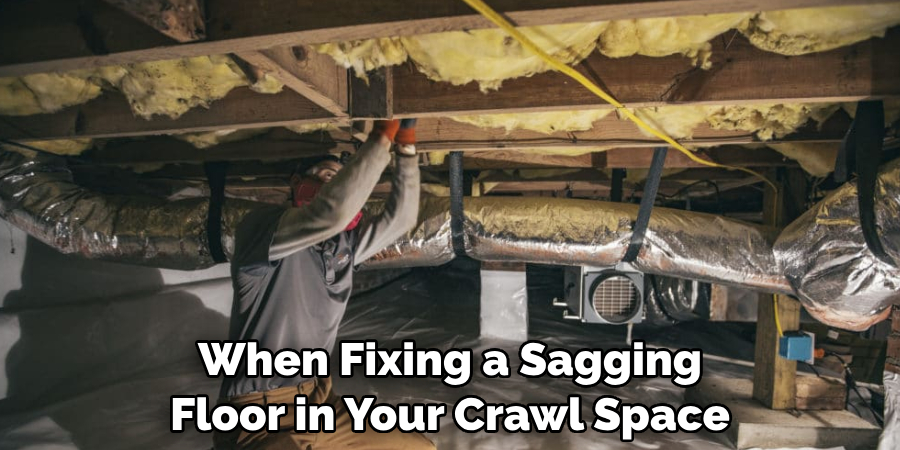
Additionally, it is important to ensure that any tools used in the process are properly secured and safe. Lastly, make sure you take all necessary safety measures such as wearing a respirator mask and turning off the power source to the area before beginning your repairs.
What Materials Do I Need for Fixing a Sagging Floor in a Crawl Space?
When fixing a sagging floor in a crawl space, you will need several materials including joists, screws, shims, support beams, and wood boards. You may also require additional items such as caulking, insulation, or concrete mix depending on the severity of the issue. Make sure to double-check that all necessary materials are available before starting your repair job.
How Long Will It Take to Fix a Sagging Floor in a Crawl Space?
The amount of time it will take to fix a sagging floor in your crawl space depends on the size and severity of the issue. Generally, it should take anywhere from one to two days to complete the repairs. However, if you are dealing with more complex issues such as extensive rot or termite damage, it may take longer. Make sure to factor in extra time for unexpected issues that may arise while completing the repair job.
What Are the Benefits of Fixing a Sagging Floor in a Crawl Space?
By fixing a sagging floor in your crawl space you can enjoy several benefits. First, this will help to prevent further damage from occurring as well as reduce the chance for future problems. Additionally, it will increase the stability of your foundation and help to improve the aesthetic appeal of your home. Lastly, repairing a sagging floor can also help to bring down energy costs by improving insulation in the area.
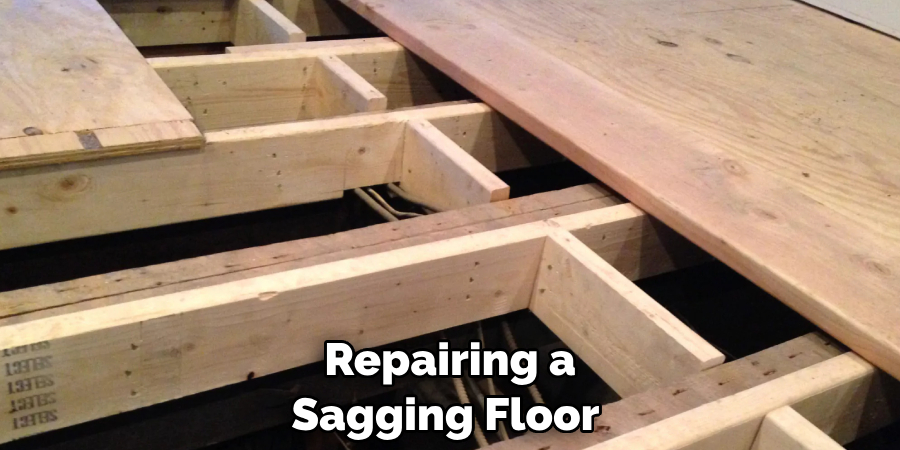
What Should I Do If My Sagging Floor in Crawl Space Cannot Be Fixed?
If the sagging floor in your crawl space cannot be fixed, it is important to contact a professional for help. A structural engineer or contractor can assess the issue and create a plan of action to address the problem. It is also important to get an estimate before beginning any repair work as this will give you an idea of what costs would be involved in getting the job done.
What Should I Do If My Repair Job Is Not Successful?
If your repair job is not successful, it is important to contact a professional for help. They will be able to assess the issue and recommend any additional steps that may need to be taken in order to fix the problem. Additionally, they can also provide advice on how best to avoid similar issues in the future.
Can I Fix a Sagging Floor in Crawl Space Myself?
It is possible to fix a sagging floor in your crawl space yourself, but it requires experience and knowledge of the process. If you are not confident in your ability to handle the job correctly, it is best to consult with a professional for help. They can provide advice as well as supplies for any repairs that need to be made.
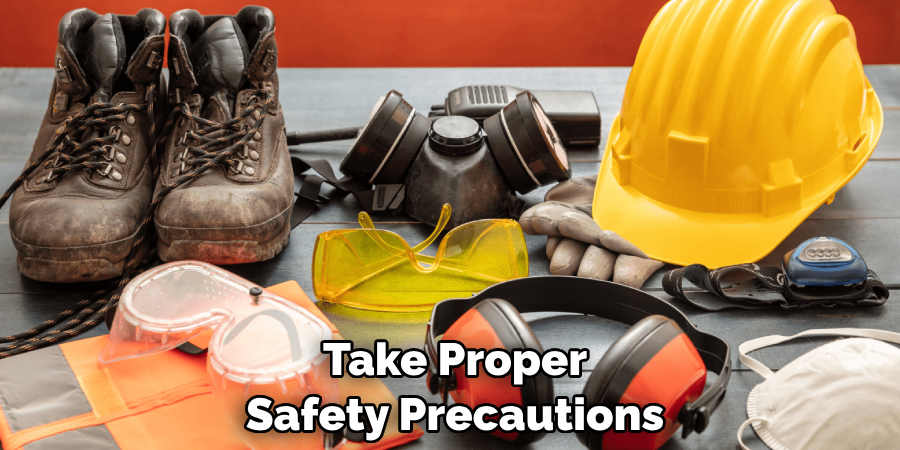
No matter how experienced you are, it is always best to take proper safety precautions when fixing a sagging floor in your crawl space. Make sure the area is well-ventilated and all necessary materials are available before beginning the repair job.
Conclusion
Repairing sagging floor joists in crawlspaces is a complex home improvement project that will take dedication and skill. But, if done correctly, you can rest assured that your floors will be properly supported and secure for years to come. Along with the satisfaction of completing a successful DIY project, you’ll also save money since you won’t have to spend on hiring professional expertise to complete the job.
Now you know how to fix sagging floor in crawl space! Be sure to research thoroughly before beginning your repair and take all necessary safety precautions – this is an endeavor worth being fully prepared for!
For any additional questions or concerns about fixing your sagging floor joists in the crawl space, reach out to a local contractor for guidance. With the right approach, you’ll have confidence knowing that you’ve taken proper steps to ensure a safe and sturdy house foundation now and into the future.
